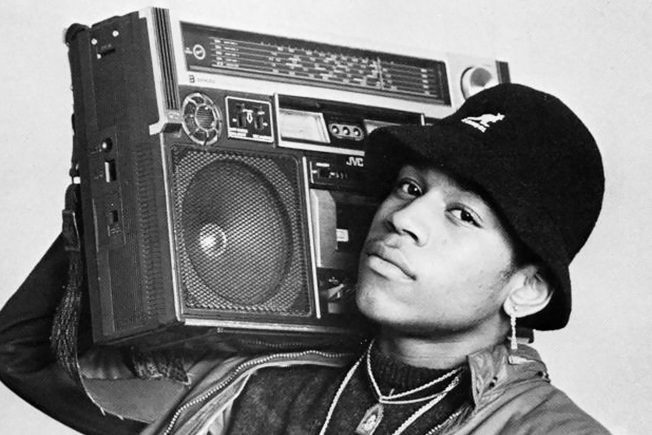This month’s student spotlight introduces you to TELYKast, an LA-based trio killin’ it with their unique pop-infused melodic vibes and live performances.

We are proud of our students and their accomplishments. Each month, we connect with Icon Collective students and alumni who have taken programs in Los Angeles or Online to showcase their hard work and success. Their achievements offer a glimpse into what’s possible after pursuing music education at the Collective.
About TELYKast
It truly is an amazing time for electronic music. After years of DJs dominating the stage with traditional CDJ-2000 setups, we are now in the midst of an exciting shift towards live performances. While acts like The Chemical Brothers, The Glitch Mob, and countless techno artists have played live sets using electronic gear for years, more and more acts are starting to incorporate traditional instruments like drums and guitar – and TELYKast is one of them.
With two guitarists, a DJ, and live vocals, TELYKast is pushing this scene forward, giving fans an experience to remember. Backed with serious production chops, their keen ear for melody and songwriting has helped fuel an ever-growing catalog of Spotify hits. And the industry is taking notice as these guys move forward in their career as one of the most exciting acts to watch coming out of ICON Collective.
TELYKast Interview
In the following short interview, we had a chance to catch up with TELYKast to talk about their collaborative project. The dynamic trio share how they all met and developed their unique sound. They also talk about their musical backgrounds and the groups live performance setup. Lastly, they offer advice for young acts coming up in the business.
Anyone that follows you on social media knows that you guys like to have fun and have great chemistry as friends. How do you guys all know each other?
Linus and I (Kyle) actually met back in 2014 when attending ICON Collective. We both had career ending sports injuries so they thought we might have some chemistry together. Literally from day one of being in LA we just knew there was something special.
Now fast forward to about two years ago. Linus was in a session and ended up meeting Trevor who was doing a very similar style of production. He was also one of the first people we had come across with the same vision we had. The three of us immediately hit it off, and the drive to take TELYKast to the top was increased tenfold. Trevor was also announced onto TELYKast back in September with our single ‘There For You’ which he sang on as well.
Your music is SUPER melodic and catchy. Did any of you grow up playing instruments? What’s your musical background?
Yes, both Linus and Trevor played instruments. Linus grew up with Julliard parents, who placed a violin in his hand when he was four. Linus also picked up a guitar at age 12 and played in bands throughout college. In college, he also studied jazz guitar, where they made him learn how to play the keys.
Trevor has also been playing guitar since he was about nine years old. After a couple of months of taking lessons, his teacher called and said he should move up to the adult classes because he was learning so quickly.
Later in his teenage years, Trevor also started a rock band that opened up for bands such as Steel Panther and The Sick Puppies. He also played at the Vans Warped Tour and just about every club in LA.
After recording an EP for Capitol Records with a very notable music manager, Trevor became fascinated with recording and production. He then began learning these skills to keep up with how music was changing at the time. Soon after that he worked at a studio and learned to apply his guitar skills and songwriting to his production. The rest is history.
You guys recently started playing shows and even sold out a few. What’s your live setup look like? What kind of sets are you playing?
The live show is a very high energy hybrid set. Being that there are three of us, there are many things we are able to do. Linus and Trevor both play guitar. Trevor also sings, so at any given time we are able to have one or all of these things going at once.
These additions keep the show interesting and really keep the crowd involved more so than a standard DJ set. The reactions when we pull out the guitar have been absolutely insane. It really makes us happy to see people accepting of us trying to shift the needle!
You guys are crushing it on Spotify with over 645,000 monthly listeners and millions of plays on some tracks. Something’s obviously working. What’s your creative process look like when it comes to making these tunes?
We usually start with writing the song with just a guitar and/or piano, and topline (vocals). In our opinion, if the song moves and is catchy on just guitar/piano and vocals, as bare-bones as it can be, then production will just enhance the song. It’s all about the song to us.
When it comes to production, we love using analog gear as well as guitar amps and pedals to create our sound. Textures of the room, tonal qualities/characteristics of guitar pedals, and analog gear are very important to us. It helps define a sound and makes the music a true commodity. Also, keeping an open mind to how much more we can all learn helps us stay creatively sharp and cool. Moreover, we love hearing stuff where we go “damn, that makes us feel basic.”
So far you’ve built everything by yourself, without the help of a manager. What kind of advice do you have for other young acts that are coming up in the business?
Having the three-piece dynamic definitely helps a lot with work distribution and getting day to day things accomplished. I also think it’s important to stay well rounded and keep up with trends both musically and socially. Always increase and build your network and void getting too locked into just the music or just the business. Both are equally as important.
It really is all about who you know, and if you can have a unique product to supplement that, then you are doing something right! In addition, always believe in yourself and stay confident and positive. Also, don’t be afraid to reach out – everyone is human. The best things we have achieved were from taking a chance and not being afraid to push the boundaries.
Furthermore, finding a good lawyer will help you navigate the more muddy waters of the music industry. Don’t let people push you around! Your music is valuable and so are you.
Connect with TELYKast

Turn your passion for music into a Profession: Learn more about our Music School Programs!
MORE ARTICLES FROM THE ICON BLOG

FIND YOUR SOUND, HONE YOUR CRAFT:
Are you ready to turn music into a career? ICON prepares students to become music producers, composers, performers, recording artists, professional DJs, and entrepreneurs in the entertainment industry. Click below to get information about our award-winning programs:

